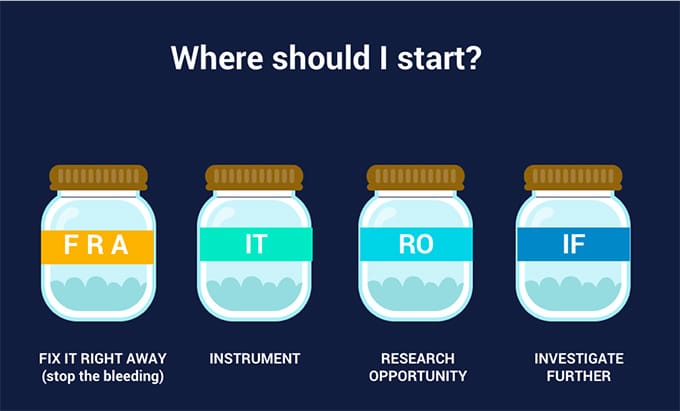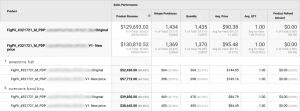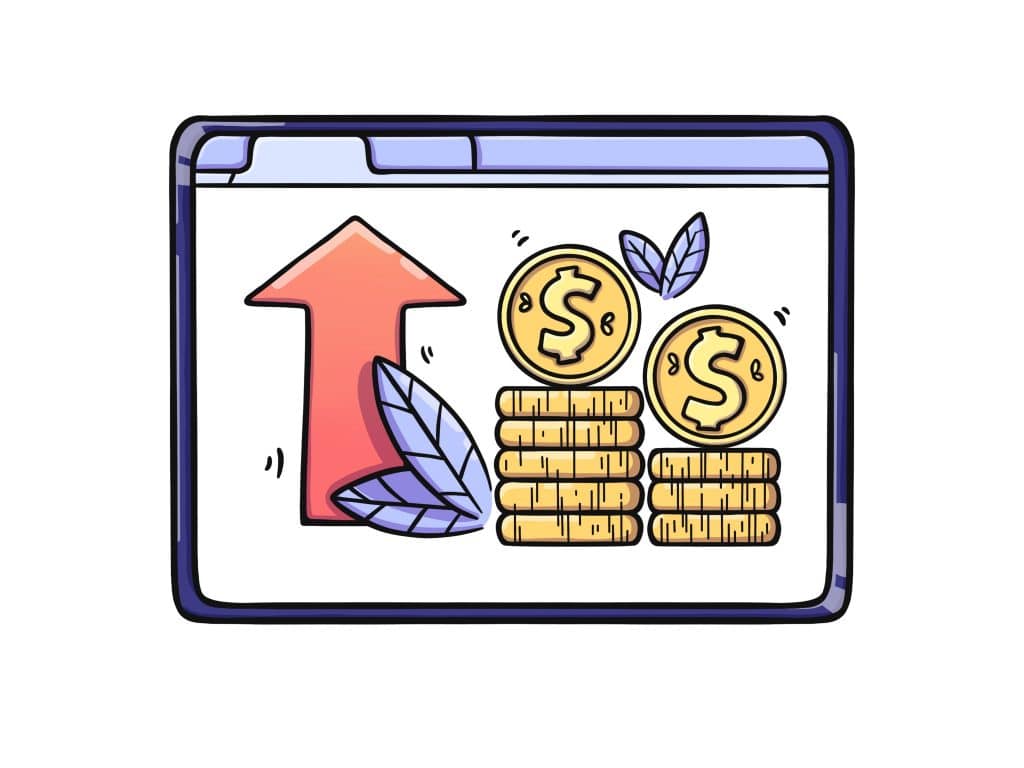How to Define Your Conversion Optimization Steps?
So, what are the big 4 steps of conversion optimization?
Add a header block to begin generating the table of contents. This block will automatically update. Alternatively manually add items using the + button below. Once you have added at least one item this message will disappear.
Setting Your Conversion Optimization Goals
I bet you’d agree that you might lack a certain degree of direction in your testing program when you aren’t clear on your business goals.
Essentially, you will get pulled in opposite directions, which can cause confusion, leading to an optimization program that doesn’t add to the business’s growth.
That’s why it’s important to consider setting up goals for your conversion optimization efforts.
Not just because it will make your CRO program effective and keep it on track, but because it will let you know when and where to invest your effort to achieve favorable results.
I know that striking a perfect balance between business and conversion goals is difficult, but you can always strike a balance that works for you.
Examples of conversion optimization goals are:
- Increasing mobile conversion rate by a certain %.
- Boosting customer retention.
- Enhancing average order value, and many more.
A clear path to conversion optimization goal achievement can be tricky because there are just so many different variables to consider.
For example, you’re likely seeking to generate more leads and leads cost money. Conversion rates might be your top priority, but pursuing high conversion rates might not be an efficient approach if it means lower quality leads and higher costs per lead.
There’s no point in setting conversion optimization goals if you can’t define and measure them. Conversion rate and revenue per visitor are common metrics. Still, I recommend choosing something more specific, like adding a certain number of subscribers by the end of November or increasing earnings from cross-selling by 15% in the next 6 months.
If you are working with a team, it’s important to have conversion rate optimization goals that everyone agrees on. Conversion goals should be well-defined and attainable to avoid exceeding expectations or failing to meet them. Conversion goal definition is an essential CRO step because it will influence your entire optimization process.
As with most things in life, setting your CRO goals will require some measure of compromise. Your conversion optimization goals might not happen overnight, but the sooner you start working toward them, the closer you’ll get to achieve them.
Some more examples of conversion optimization are:
- Purchase a product.
- Signing up for a newsletter.
- Subscribing to software.
- Hiring a service.
- Downloading a free e-book.
- Filling out a contact us form.
- Answering a survey.
- Giving feedback.
- Taking any action a page is designed to encourage.
- Doubling your conversion rate.
- Decreasing your shopping cart abandonment rate.
- Increasing your retention rate.
Conversion goals can be broken down into two different types: macro and micro goals. The macro-goal is the end action you want visitors to take when they land on your website. While micro-goals are the small steps your visitors take to get to the end action (macro) on your site.
Having business goals is important for several reasons, as they:
- Provide a way to measure the success of the CRO efforts.
- Keep you and your CRO team on the same page as to what needs to be achieved.
According to Ayat Shukairy, Invesp Co-Founder:
The key here is that any marketing initiative should be tied to a KPI or business goal for the quarter if the company is hoping to achieve it. Rather than having a siloed marketing approach – have a synergy between marketing departments and CRO and sales to make sure they’re all working towards those one or two outlined goals.“
- Ensure that an experiment is headed in the right direction.
Hatice Kaya, the Senior CRO Specialist at Invesp, explained to me how she goes from a business idea to a CRO roadmap. The scenario goes as the following:
Suppose your business goal is to increase your mobile conversion rate during the first quarter. The first step is to look at the website’s analytics platform to have a brief understanding of what the mobile conversion rate is at the current moment.
Checking your analytics before the conversion process is important because you will know whether you have improved conversions or not at the end of the project.The next step is to conduct conversion research with a focus on the mobile experience.
By conversion research, I mean you take a deep dive into heuristic evaluations, and we launch video recordings and heatmaps focusing on mobile visitors only.
This process of research can take up to three weeks.In most cases, if there’s anything that’s affecting conversions on the site, you are more likely to see it during the research phase. And whatever the conversion killer might be, you are more likely to see on almost every conversion research technique you use.
We then list all the observations we made during the research phase. This list of possible conversion bottlenecks is usually long, it can go from 60 to 80 or even 100.
So, we then rank all the issues on the list using our prioritization framework to determine which issues will help us increase the mobile conversion rate.When we have ranked the issues, that’s when we come up with the conversion goals, launch tests, and see if our hypothesis was correct or not.
Suppose we noticed that people were not scrolling all the way to the bottom, then we might need to launch a test: long page (original) vs. short page (new design). Suppose we noticed that people were clicking on the wrong areas of the page, then we might need to make it clear where they should be clicking.
So, different tests may be launched at the same time or even at different times.”
Creating Personas for Your Website
Before even starting with conversion optimization, you should identify the key audiences that visit your site. First, create buyer personas – profiles of fictitious people who represent those target groups.
Personas, proposed by Alan Cooper, a noted pioneer software developer in the late 1990s, is a method that has gained increasing attention over the years.
Nowadays, Personas have become the new standard, a fundamental part of UX designer and Conversion Optimizers’ toolkit.
But, many marketers have tried them and given up, so it begs the question:
Are personas as beneficial as we think?
I recommend getting at least one persona per customer segment, as it will help you understand their specific needs and challenges. As personas illustrate sections of your audience, and even though these personas are not real individuals, they are based upon the observations of others.
HubSpot sums up the persona as:
semi-fictional representation of your ideal customer based on market research and real data about your existing customers.”
A good persona:
- Represents the majority of users on your website.
- Expresses and focuses on the needs and expectations of the most important user groups.
- Gives a clear picture of the user’s expectations and how he/she will use the site.
- Aids in uncovering universal features and functionality.
- Describes real people with backgrounds, goals, and values.
Furthermore, a good persona is a narrative that describes the flow of an individual’s day. Also, their skills, attitudes, environment, and goals. Moreover, it answers critical questions that a job description or a task list doesn’t, such as:
-
- Which pieces of information are required, and at what points in the day?
- Do users focus on one thing at a time, carrying it through to completion, or are there any interruptions?
- Why are they using this product in the first place?
A poor persona is a description or a list of tasks or duties with no regard to the user’s needs, desires, or motivations. A persona is not only a demographic profile, a market segment, or a summation of survey data.
Stating Optimization Tasks
Categorize your problems into one of 4 categories:
- Fix Right Away (FRA).
- Investigate Further (IF).
- Research Opportunity (RO).
- Instrument (IT).

A conversion optimization project is typically divided into four different phases that intertwine:
- Scrutinize stage: Where you conduct various activities to determine possible testing areas on a platform or campaign.
- Hypothesis: Where you create a hypothesis for the different testing ideas identified during the scrutinize phase.
- Implement: Where you validate your hypothesis through the process of AB, or usability testing.
- Propagate: Where you look for insights, share them within the organization, across marketing channels, and verticals.
As you go through the process of identifying conversion issues on your website (scrutinize), you can easily identify anywhere from 150 to 250 possible test scenarios. Shana Rusonis, in her blog ‘A Method for Prioritizing A/B Test Ideas That Won’t Hurt Feelings’ on Optimizely, states:
Prioritization is the million-dollar question in optimization programs. It gets at the heart of our most frequently asked questions: “What should I test?”
After identifying and prioritizing your ideas, take advantage of our awesome yet affordable AB testing engine to launch your first test. Our success team will guide you through all the steps of launching your first experiment.
Conclusion: Tracking Results
This should be the easiest step since you’ve already set your CRO goals, you can start measuring your progress. Make sure to come up with a structured way of reporting and tracking your results.
Create weekly or monthly reports of all your experiments and your goals to measure how close you are to achieving them.
You can easily integrate FigPii AB testing experiments with Google Analytics to get more custom and advanced reports.
Using custom reports, you can break down all measurable goals, for example, what was the impact of our most recent experiment on the sale of each product:


